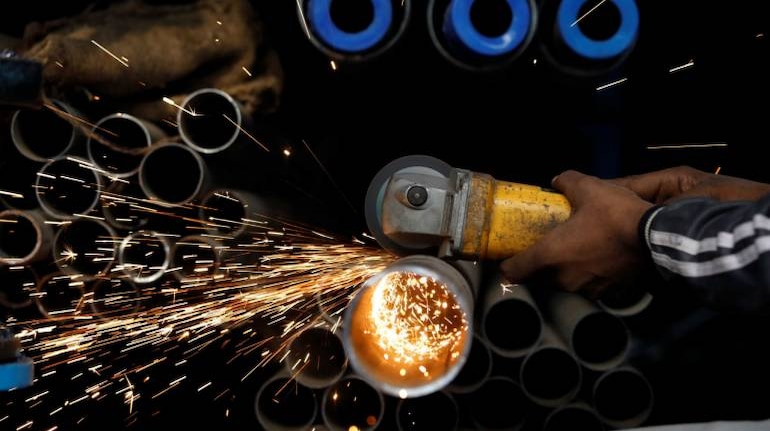



India's gross domestic product (GDP) grew 5.8 percent in January-March, official data released on May 31 showed, confirming fears of a slowdown, as the new government assumed office amid expectations of a wide ranging policy impetus to turnaround the economy that is nursing multiple pain points.
"Real" or inflation-adjusted GDP grew 6.8 percent in 2018-19, lower than previous year's 7.2 percent, data released by the Central Statistics Office (CSO) showed.
The growth in GDP was slowest since 2014-15.
Slowdown signs have been visible since last year, with GDP growing 6.6 percent in October-December 2018. The national income data have reinforced deceleration signs that were emanating from a slew of shop-end data, such as car and consumer goods sales, often seen as proxy indicators to gauge trends in household spending.
Fourth quarter corporate results have also shown a slowdown in profit growth across sectors. People are buying fewer cars and domestic sales, production and export of automobiles reflected this deceleration. Similarly, growth in fast moving consumer goods (FMCG) have also slowed down considerably in recent quarters, mirrored in slowing sales of consumer staples, such as biscuits, soaps, oil.
One of the first tasks of the new government will be to usher in policies to boost people's spending, buoy demand. This, in turn, will prompt companies to investment more, add capacities to meet growing demand, and eventually, hire more people. The new government will present its first central budget in the first fortnight of July 2019, amid heightened expectations that it will offer tax breaks to individuals and households, giving them more money to spend and save.
National income data showed that gross value added (GVA), which is GDP minus taxes, grew 5.7 percent in January-March 2019. It was 7.9 percent in the same quarter last year and 6.3 percent in October-December 2018.
GVA during 2018-19 grew 6.6 percent while it was 6.9 percent in 2017-18. GVA is a considered to be a more realistic proxy to measure economic activity.
The manufacturing sector grew 3.1 percent in January-March 2019, from 9.5 percent in the same quarter last year. For the whole year, the manufacturing sector stood at 6.9 percent in 2018-19 from 5.9 percent in 2017-18.
Factory output measured by the index of industrial production (IIP) contracted in March 2019, the first time in 21 months. This shows declining momentum of both investment and consumption. Even core industries productions of steel, electricity, coal and cement are falling or have been stagnant in recent quarters.
The agriculture sector, which has been hit by falling farm produce prices and flat income growth, stood at -0.1 percent in January-March 2019 and 2.9 percent in 2018-19.
Over the last two years, farmers have been protesting in several states, demanding better prices and debt write-offs. Low retail prices may be heartening to consumers, but persistently low food prices, have meant that farmers’ income have remained flat.
India's long slowdown in food prices may well be symptomatic of a problem of abundance. Low growth in farmers’ income has been attributed to the BJP's loss in the Assembly elections of December 2018, particularly in Madhya Pradesh.
Procurement is taking place at higher prices only for fourteen (14) cereals by government agencies such as the Food Corporation of India (FCI). Vegetables, potatoes and onions however, are not procured by government agencies. That's why vegetable prices have crashed in wake of a plentiful harvest.
The new government has to quickly move on policies to raise farm incomes and also ensuring that retail inflation remains within the central bank’s tolerable level of 4 percent.
Discover the latest Business News, Sensex, and Nifty updates. Obtain Personal Finance insights, tax queries, and expert opinions on Moneycontrol or download the Moneycontrol App to stay updated!
Find the best of Al News in one place, specially curated for you every weekend.
Stay on top of the latest tech trends and biggest startup news.